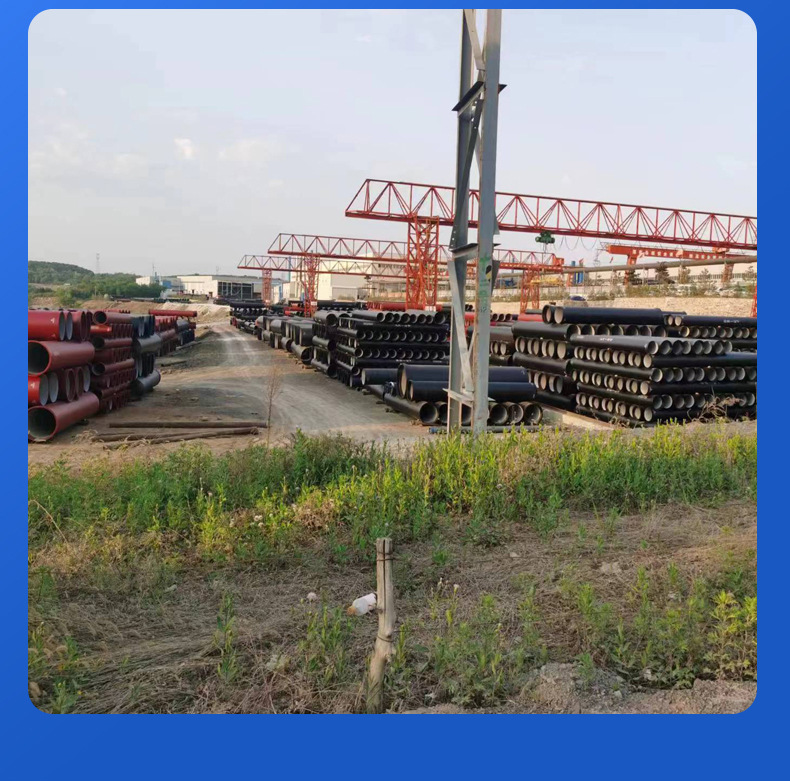Cast iron pipe size - length
2025-01-15 14:15:27 hits:0

The length of cast iron pipes is typically determined based on manufacturing standards and intended use. Below is a detailed overview of cast iron pipe sizes:
Common Length Specifications
- 3 meters: Some cast iron pipes come with a standard length of 3 meters, suitable for specific applications such as urban water supply and small drainage systems.
- 4 meters: This is a common standard length for many cast iron pipes, facilitating ease of transportation and installation. It is widely used in various fluid conveyance systems.
- 5 meters: For larger cast iron pipes, particularly those used in drainage and wastewater treatment, 5 meters is a typical length specification. This length can meet fluid conveyance needs within a certain range while reducing the number of pipe connections, enhancing system stability and reliability.
- 6 meters: The 6-meter length specification is also suitable for large cast iron pipes, especially in scenarios requiring long-distance fluid conveyance. However, due to transportation and installation constraints, 6-meter-long cast iron pipes may require special transportation equipment and installation methods in some cases.
Factors Limiting Pipe Length
- Manufacturing Process Limitations: Cast iron pipes are typically produced through processes such as centrifugal casting. During the casting process, factors such as mold size, casting equipment capabilities, and production process complexity impose restrictions. For instance, excessively long pipes can lead to quality issues during rotation, such as uneven wall thickness and casting defects (like porosity and inclusions).
- Transportation Limitations: From a transportation perspective, excessively long cast iron pipes can exceed the length limits of cargo vehicles. Standard cargo vehicles (like trucks and flatbeds) have certain length restrictions. If the cast iron pipe is too long, it cannot be transported on ordinary vehicles and requires special transportation tools or arrangements, significantly increasing transportation costs.
- Installation Limitations: On the installation site, excessively long cast iron pipes are difficult to handle. Cast iron pipes are heavy, and long pipes are prone to deformation or damage during lifting and handling. Moreover, during the pipe laying process, the space and conditions at the construction site do not allow the use of overly long pipes, as certain operations such as pipe connections, turns, and obstacle crossings need to be carried out within a certain space. Overly long pipes hinder flexible construction.
- Performance Limitations in Use: Cast iron pipes are subjected to various factors during use, including temperature changes, soil settlement, and internal fluid pressure. Excessively long cast iron pipes may experience significant deformation stress due to thermal expansion and contraction, leading to pipe rupture or loose connections. Geological factors such as soil settlement also exert uneven forces on underground cast iron pipes. In such cases, long pipes are more prone to damage, affecting their service life and safety.
Importantly, there are certain limitations on the lengths of cast iron pipes. Specifically, "what length is cast iron pipe not offered in?" Typically, extremely long pipes beyond the standard range (e.g., longer than 6 meters in most cases) are not commonly offered due to the aforementioned constraints. Instead, cast iron pipes usually come in standard sizes within a range of approximately 3 to 6 meters, with specific lengths varying based on manufacturers, product specifications, and usage requirements. These standard sizes are often referred to as "cast iron pipe standard sizes" or, more specifically, "cast iron drain pipe sizes" depending on their application.
In summary, cast iron pipe lengths are typically within a standard range, generally between 3 and 6 meters. When selecting the length of cast iron pipes, various factors need to be considered to ensure the stability, reliability, and economy of the piping system.

 en
en  fra
fra  de
de  ru
ru  gle
gle  th
th  ara
ara  it
it  jp
jp  kor
kor  zh
zh 


